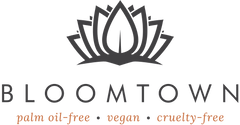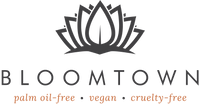Is Palm Oil Vegan?
Is Palm Oil Vegan?
In order to answer this question, first we need to take a deep dive into what palm oil is and where it comes from.
What is Palm Oil?
Palm oil, also known as palm kernel oil, is a multi-billion dollar a year megacrop that comes from the oil palm plant, a tropical palm.
Palm oil is added to around 50-75% of household products, from biscuits to toothpaste.
Palm oil is just a fat, a very shelf stable fat, and it's cheap, so it's the go-to fat for making emulsifiers, which is why it ends up in so many products.
Where Does Palm Oil Come From?
90 percent of the world’s palm oil is currently being produced in Malaysia and Indonesia, where it’s estimated that an area equivalent to 300 football fields of virgin rainforest is cleared each hour to plant oil palm, the oil from which finds its way into everything from peanut butter and scented candles to biofuels.
Consequently, Indonesia has been awarded the less than laudable distinction of being the country with the fastest rate of deforestation.
What's wrong with palm oil?
Palm oil cultivation is linked to deforestation and the critical endangerment of Indonesian and Malaysian orangutans, elephants, tigers and rhinos in what the UN has called a conservation emergency.
Many people don't realise that several rainforest-dwelling species are one step away from extinction due to palm oil cultivation.
Only a small fraction the animals that live in these forests can survive in palm oil plantations, and many, such as orangutans, are considered pests.
The COP estimated in the 2006 alone, 1500 orangutans were clubbed to death by plantation workers. Palm Oil cultivation is also responsible for 10% of total green house gas emissions.
You see, the specific problem with palm is that it’s being planted in such an ecologically sensitive region of the world, which also happens to be rife with cheap labour, corruption and lack of oversight, making it an appealing to companies looking to save money.
Those who argue that palm oil is necessary because it's a high-yield crop overlook the reality that palm oil can only be planted in the tropics, and that palm oil plantations are replacing animal habitats.
Lower yield crops planted in a less ecologically sensitive regions would be far more preferable...and in fact these do exist, they're just not as cheap. Being high-yield doesn't make palm oil sustainable.
What about sustainable palm oil?
In 2010 Unilever made a high-profile announcement that it would be switching to “sustainable” palm oil.
This would be commendable if it weren’t for the fact that Unilever is a member of the Round Table for Sustainable Palm Oil (RSPO), the self-regulating and self-certifying body that, claims to be not for profit, yet is made up of the very corporations that profit the most from the palm oil industry.
Together, RSPO members like Unilever, Cadbury's, Nestle, Tesco, and L’Oreal (who used to own The Body Shop) make up 40% of the global palm oil trade.
Even if you choose to believe the claims of the RSPO, in 2012, only 15% of the total palm oil produced around the world was even RSPO-certified. Most palm oil is not even claiming to be sustainable, which makes the hype created over sustainable palm seem like nothing more than greenwashing.
According to Greenpeace, the “RSPO actually risks creating the illusion of sustainable palm oil, justifying the expansion of the palm oil industry.”
"Sustainable" palm oil really just means using already cleared land, and because the global demand for palm oil is ever increasing, we need to prevent more virgin forest from being cleared by reducing overall demand.
Reasonably priced, palm oil-free alternatives are a necessary part of the sustainability equation.
What Products Contain Palm Oil?
Once you know what to look for, you'll notice that palm oil is in everything!
Thankfully, avoiding palm oil in food has become easier since the EU passed legislation in December 2014 requiring that food labels specify type of fat (they can no longer just say vegetable oil, for example).
But avoiding it in your cosmetics and toiletries, where it lurks under many a guise, can be really difficult.
Some smaller manufacturers might not even realise (we'll give them the benefit of the doubt!) that many of the ingredients they’re putting into their products are actually palm-derived.
But there’s absolutely no excuse for the very large cosmetics brands that flaunt their cruelty-free credentials, yet continue to use palm oil and palm-derived ingredients in their products.
Part of the problem is a lack of transparency in the supply chain. Some of the ingredients below are listed as usually containing or usually derived from palm because when pressed, many distributors and manufacturer say the simply don’t know - that it could be coconut or palm or both.
How to Avoid Palm Oil
If you want to avoid buying products with palm oil, here are some key terms to watch out for:
Easy to spot terms and indicators
Elaeis guineensis (botanical name)
Palm kernel
Palm fruit
Palmitate
Palmitic
Kernelate
Synthetic detergents and surfactants
Sulphates/Sodium Lauryl Sulfate (SLS)
Stearic Acid
Preservatives
Used to kill or prevent microbial and fungal growth in a formulation
Parabens
Emulsifiers
Use to create lotions, creams, etc.
Ceteryl alcohol
Glyceral stearate
Olivem/ Olivwax
Polysorbates (20, 80, etc)
Emollients
Caprylic Capric Triglycerides
Coco-caprylate/caprate
Vegetable Glycerine (unless otherwise specified)
This is by no means a comprehensive list. For more information download our pocket guide to palm oil.
Should We Boycott Palm Oil?
As the world population contiues to increase, so does global demand for palm oil, so we believe that the only way to prevent more virgin forest from being cleared is to reduce overall demand. How? By raising awareness and offering consumers palm oil free alternatives, just as consumers now have plenty of vegan options on the market.
Palm oil isn't going anywhere, but palm oil free products should be part of the sustainability equation.
Is Palm Oil Bad For You?
Like all fats, palm oil has 120 calories per tablespoon, but what makes palm oil less healthy than, say, olive oil, is its high saturated fat content.
Palm oil is 49% saturated fat and may increase bad cholesterol levels and the risk of heart disease.
That being said palm oil is rich in Vitamin E and antioxidants, so it's not all bad news.
So, is Palm Oil Vegan?
You made it to the end! The answer to the question is, technically, yes, because it's a plant-derived ingredient. However, if you ask yourself why you are vegan or choose vegan products some or all of the time, then the answer is more complicated.
In our opinion, palm oil is not vegan because it is linked to such widescale deforestation and has put so many species on the brink of extinction.
Even if you're not vegan when it comes to your diet, at least you can make better choices by choosing local and ethically sourced products. The same cannot be said for palm oil due to the amount of corruption and lack of transparency in the supply chain.
If vegan means preventing animal suffering, then no, palm oil is not vegan, and we don't think a brand should be certified vegan or cruelty-free if their products contain palm oil or palm-derived ingredients.
The truth is that it shouldn’t be entirely up to the consumer to hunt down palm oil-free versions of their everyday products when the big companies that dominate the industry continue to use it in everything from crisps to eyeshadow. But the power is ultimately in your hands.
To learn more about the palm oil crisis and help save the rainforests and its inhabitants, please visit:



